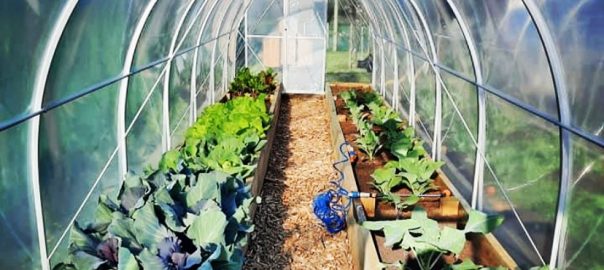May in the Tunnelhouse!
Welcome to Morrifeld’s monthly garden guide where we go undercover to bring you the best tips and tasks for great greenhouse growing! With winter just around the corner, May is a crucial month. Those in warmer regions will need to transplant their tender veges into the greenhouse before the daylight hours shorten even more. For cool climate growers, it’s time to make those final sowings and transplants of staple leafy and heading greens.
Morrifield’s Gardening Zones
Our long maritime country is filled with exciting microclimates. That means your gardening zone may be quite different to your neighbour’s’ just a few kilometers away. Use our simple descriptions to help gauge which undercover zone sounds like you!
Zone 1 (Warm Winters, Hot Summers)
Zone 2 (Mild Winters, Hot Summers)
Zone 3 (Cold Winters, Mild Summers)
Zone 4 (Severe Winters, Hot Summers)
Top Tasks Around the country
Zones 1 and 2:
Shift the shade!
If you haven’t already done so, remove the shade cloth from your greenhouse now, to let in as much sun as possible. There is still time to get planting!
Year-round Italian!
Zucchini are far too delicious to save for summer only. Source seedlings right away, and plant them into your greenhouse in rich soil. Offer them a liquid feed on a weekly basis, and protect with slug and snail bait.
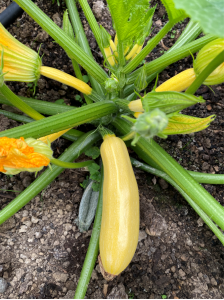
Cacti care
Cacti and succulents won’t thank you for wet feet in winter, so bring them into the greenhouse for the dampest months. Generally speaking, these dry loving plants require no watering over the coldest months of the year. However, if you find they are looking dehydrated, offer them just a modicum of moisture, and always make sure their growing mix is completely dry before repeating.
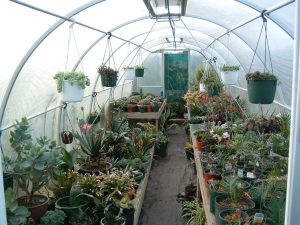
Peas, please!
What could be more delicious than out-of-season, crispy podding, sugar snap and snow peas. Sow the seed into your greenhouse now. Don’t be tempted to use wire netting supports which could damage the skin of your tunnel house. Use slim bamboo stakes or jute twine. Strawberry netting will also suffice but it does tend to break down in ultraviolet light.
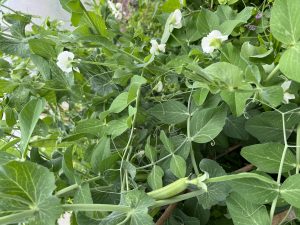
Zones 3 and 4
Leafy greens
This is your last chance to transplant leafy salad staples into the greenhouse. When choosing lettuce seedlings, look for red varieties, as they are more hardy than their green cousins. Cut-and-come-again lettuces are to be favoured over hearting varieties which often fail to fill out in the colder months (and if they do, they tend to provide hiding places for slugs and snails).
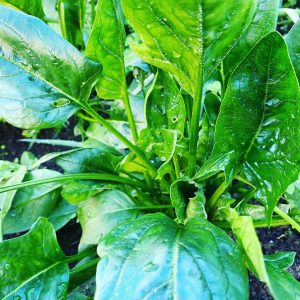
Brassica basics
Waste no time in transplanting broccoli, cabbage (especially ‘spring’ varieties) and cauliflower seedlings into the greenhouse, along with Asian greens such as bok choy, pak choi, mibuna and mizuna. These staples will grow outdoors but they quickly mature to perfection in warm winter shelter.

Something different
As a change from the basics, pop some tasty corn salad seedlings into your greenhouse. This delicious little rosette-style leaf is nutty and flavoursome. Don’t be afraid to plant celery, too, even at this late stage in the year. Choose ‘cutting leaf celery’ if you can get it, but even regular celery will suffice. If regular celery fails to produce thick, succulent stems, its leaves (and even spindly stems) will be a tasty addition to soups and casseroles, and they are also perfect for snipping into salads.
Fresh flavour boosters
Winter roasts and casseroles reach new heights with the addition of fresh herbs – but who wants to pay supermarket prices for these out-of-season treats when you can grow your own in your greenhouse. To do this, prise out rooted cuttings from the base of wiry oregano, thyme, lemon balm, and mint. Use a hand fork to remove small sections of clumping herbs such as chives, garlic chives and sorrel. Dig up a few parcell and parsley plants while you’re at it, and plant everything into the greenhouse. In the indoor warmth, these winter treasures will provide welcome flavour. Double your effort by planting your herbs into pots which can be moved out of the greenhouse once the weather warms up, and be given away as gifts.
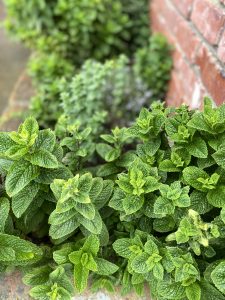
Warm the worms!
Worm farms seldom survive outdoors in cold climates. Now is the time to bring your worm farm into the greenhouse where its occupants can keep operating all through the chilliest months. Place the worm farm close to the door where it will receive a cook breeze on the warmest days.
All zones
Mind the mildew!
As the world grows cooler, it’s so tempting to keep the greenhouse door and vents closed to lock in that longed-for heat. Unfortunately, a lack of ventilation spells disaster in the form of mildew. In warmer districts, leave the vents and door at least partially open on all but the coolest of days. Close the door at night but open roof vents half way. In cool to cold regions, partially open your greenhouse door on sunny days, and always open other vents. Close all openings over night.
Cover crops
Where space permits, sow a cover crop (also known as green manure) directly into greenhouse beds. This crop should be cut down and dug back into the ground in late winter, in time to break down before spring sowing and transplanting. Cover crops include broad and tick bean, alfalfa, lupin, pea and vetch. Mustard can also be sown as a cover crop, but only if you don’t wish to plant brassica in your greenhouse immediately after.
Spick ‘n’ span
A sparkling clean greenhouse admits more sunlight than a dusty or algae-covered one. What’s more, that extra sunlight translates to more warmth and more growing power for your precious plants. As if that’s not reason enough to get cleaning, a well washed polythene cover will also last longer! To clean your greenhouse, give it a quick hose down, inside and out, to loosen and soak dirt, dust and any algal build up (we don’t recommend a water blaster for this job as it’s too powerful and can damage your structure, especially as it ages). Next, gently brush the greenhouse clean with a soft house broom or hearth brush dipped into a bucket of water and biodegradable detergent. Don’t forget the wood and metal work while you’re at it. Rinse with your hose, and leave to dry.
Check out the link below
https://www.facebook.com/watch/MorrifieldTunnelhouses/
Solar powered composting
There’s been concern in gardening circles recently, that herbicide residue may be sneaking into commercial compost mixes, spelling disaster for highly sensitive plants such as tomatoes. That’s a very good reason to consider banning the bagged material, and to brew your own instead. What’s more, when you build your compost inside your greenhouse, you double the heat as microbial action meets solar warmth!
We don’t recommend building a compost pile in your greenhouse (if it were to topple, it could damage the structure). Instead, grab yourself a black polythene bin, and shift it into the greenhouse. Load it up with textbook-quality compost materials right now, and the results will be ready do dig in come spring planting time.
Mother’s Day Memo
Chrysanthemum and potted colour are synonymous with Mothers Day, but this May, why not take it up a notch by gifting Mum a set of staged greenhouse shelving to go with it! These nifty pieces of fold away garden furniture let every plant on the shelves have its fair share of light, and are perfect for displaying the flowers that are sure to come Mum’s way this Mothers day!
Go on – you know you want to!
You can bet there’s not a greenhouse gardener alive who doesn’t wish they had even more space for undercover growing! But just because you regret not ordering a larger greenhouse first time round, doesn’t mean you can’t have another! Whether you plan to use ‘the spare’ for special treasures such as growing cut flowers or orchids, or to produce extra veg to support the young families in your life, now’s the time to put in your order. Use your winter downtime to erect your greenhouse and prepare its beds, and you’ll be up and running come spring!
Sow me undercover now
Zones 1 and 2 Directly into the ground: Asian greens, corn salad, lettuce, microgreens, peas (all varieties), spring onion. In seed trays or bags for transplanting or moving outdoors later: broccoli, celery & leaf celery, celeriac, cabbage, cauli, chives, Florence fennel, lettuce, parsley, rocket, silver beet, parcel, perpetual spinach beet, winter spinach.
Zone 3 and 4 Directly into the ground: Broad beans, coriander, leafy Asian greens (such as Chinese broccoli ‘Gai Lan’, mibuna, mizuna, pak choi, and tat soi), cool season microgreens, spring onions, ‘Tasty Tendrils’ peas.
Transplant me undercover now
Zone 1: Celeriac, dwarf and runner beans, lettuce, zucchini, winter tomato varieties.
Zones 2, 3 and 4: Broccoli, celery, cabbage, cauli, kale, lettuce, parsley, silver beet, parcel, perpetual, rocket, spinach beet, winter spinach, woody herbs (including rooted cuttings) such as marjoram, sage, and thyme.
News and views
Thinking of growing pineapple in your greenhouse? You might want to think again, according to Golden Bay sub tropical enthusiast, Ben Ackliff, who has found the foliage on these prickly plants to be super sharp. Not only does he regard the pineapple’s leaves a danger to hands and legs, but he warns that they are so sharp they could also tear through the plastic skin of a tunnel house. Be warned!
Written by Diana Noonan on behalf of Morrifield Greenhouses
*Please note these are guides only
